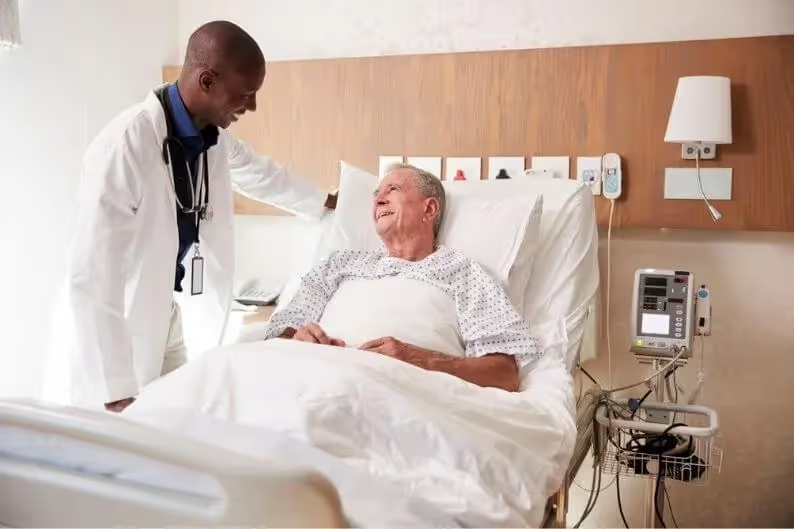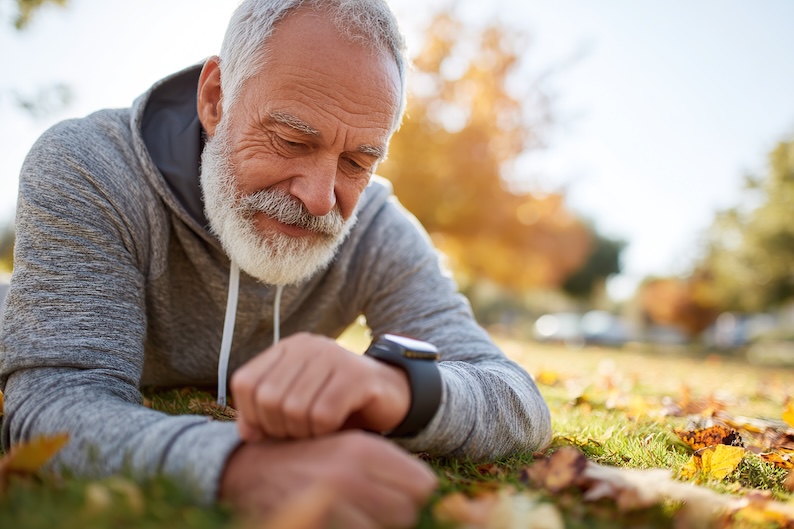Stroke recovery can take weeks, months, or sometimes years. It's different for everyone. That duration will depend on how severe your stroke is and how quickly you get help when you realize you're having a stroke.
Rehabilitation is crucial to help you recover. The condition impacts the brain, so you'll often have to relearn some skills to improve your mobility and quality of life. Here are some of the things involved in that rehab.
What to Expect
The approach that's taken for the treatment of stroke patients will depend on what part of the body has been affected or what kind of stroke they had.Some issues that may linger include:
- Paralysis
- Issues with thinking, memory, learning, or judgment
- Problems speaking
- Trouble controlling emotions
- Numbness
- Pain in the hands and feet that gets worse with movement
- Problems chewing or swallowing
- Bladder or bowel control issues
- Depression
There are various treatments during stroke recovery that could be used depending on which symptom(s) the patient is experiencing.
For physical issues, things like motor-skill exercises may be used to help improve muscle strength or with things like swallowing.
There's also mobility training, which employs things like walkers, canes, or wheelchairs to help support you while you relearn how to walk.
Technology is being used to help in this arena, as well. Things like stimulating muscles with electrical current, using robotic devices to help improve function in limbs, and even virtual reality are all viable options.
When it comes to cognitive issues, there are several therapies to utilize. Occupational therapy and speech therapy are two very common ones. These can help with memory, problem-solving skills, and social skills that may have been affected during the stroke. Various types of counseling or medications are prescribed, as well.
Stroke Recovery Timeline
Rehabilitation should begin as soon as possible after the stroke happens. Recovery is likely to be more successful the sooner it begins after the incident.
Your stroke recovery timeline will depend on the severity of the stroke and the complications that come along with it. You may end up recovering fairly quickly, but most people end up needing some sort of rehabilitation that lasts for months or even years.
Here's a general overview of what a rehabilitation program might look like.
Initial Treatment
When you go to the hospital for a stroke you will most likely be admitted to the emergency department. The medical team will stabilize your condition and determine what type of stroke you had. Depending on how bad the stroke is, you may be sent to intensive care.
Rehabilitation will get started as soon as 24 to 48 hours after the stroke. A team of different doctors, nurses, and physical and occupational therapists will work together to begin addressing any impacts the stroke may have had.
First Few Weeks Post Stroke
After leaving the hospital, which is usually 5 to 7 days after the stroke, you will have a better idea of the effects the stroke has had on your body. The medical team involved in your treatment will be able to get a better idea of what your stroke recovery plan will look like.
The focus for that recovery will be on the activities of daily living (ADL). These are things like feeding yourself or bathing. You should also discuss anything like work-related activities or other skills or hobbies that are important to you on your recovery path.
First Few Months After A Stroke
The first 1 to 3 months after a stroke are the most crucial to your recovery. The goal is to restore all of your physical and cognitive function to as close to what it was before the stroke as possible.
Sometimes stroke patients experience what's called spontaneous recovery. That's when a skill you thought you lost in the stroke suddenly returns to normal.
While you may make great progress during this time, you should also temper your expectations. There may be setbacks like having another stroke or contracting another illness like pneumonia. It can have extremely negative impacts on your mental and emotional state, but it's important to work with your team of professionals to get back on track.
Long-Term Outlook
About 6 months into your stroke recovery you'll start seeing the improvements come along much more slowly. You may notice some impairments will be ongoing for several more months or years.
It's still important to remain in close contact with your care providers to make sure you're still working towards the fullest recovery possible. There may be some adjustments to your treatment that can be made or new treatments that come available. There's always still hope for smaller advancements.
How to Prevent Another Stroke
Once you've had a stroke you're at a much higher risk of having another one. The Centers for Disease Control and Prevention says one out of every four strokes every year are recurrent. That's why it's important to take all the precautions you can to prevent another stroke.
Start by treating the underlying cause of the stroke. Those causes can include:
- High blood pressure
- Smoking
- Diabetes
- High cholesterol
- Obesity
- Heart disease
- Sleep apnea
- Living a sedentary lifestyle
You can work with your physician to manage conditions like high blood pressure, diabetes, and sleep apnea. While medication is required for some of these conditions, you can also lower your risks by making some lifestyle changes.
If you smoke or use tobacco in any way, you need to quit immediately. Excessive drinking or illegal drug use also must be cut out.
For those who are able, getting an adequate amount of physical activity is a great way to prevent many other health issues, including strokes. Staying active, along with eating a proper diet, will help you maintain a healthy weight.
It's All About Goals
When it comes to stroke recovery time, it's all about setting goals and keeping the right mindset. Bouncing back after such a serious medical incident is hard, but you can do it.
Get help as quickly as possible so you can start rehabilitation as soon as you're able to. Follow the recommended recovery plan you're given by the doctor. Set some goals for your recovery timeline based on the effects you're dealing with. And remember what motivates you to keep pressing on. Stroke survivors can tell you it's a tough road ahead, but remembering the friends and family you have supporting you makes all the difference.




